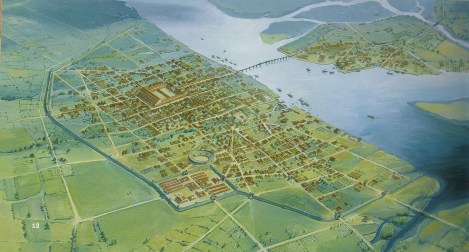Prologue

"The great empires are not shy." - Publius (or Gaius) Cornelius Tacitus (ca. 56 AD - ca. 120 AD)
In the 1st century of our era. Europe was largely dominated by the most prosperous empire the West had ever seen. The Roman Empire, with a population of 80 million people. It was at that time the civilization with the most sophisticated technology in the world; weapons, crops and ships were the Romans the most advanced. Scipio and his family managed to crush and make Rome control the Mediterranean. Julius Caesar, defeated an ancient enemy who came to sack Holy Rome; The roosters. Octavian Augustus, the adopted son of Julius Caesar, abolished the corrupt and degenerate Roman Republic by adopting the Empire. While Emperor Claudius, conquered Britannia. And the Emperor Trajan, defeated the Dacians, securing the gold mines and instilling as natural defenses, the Carpathian mountains.
In the reign of Marcus Aurelius, there was an event that would mark the change in the timeline. A Roman businessman in Britannia, obtained permission to explore the Septentrionalis Oceanus (North Sea) in search of islands that would serve as port-camps for the British-Roman whaling industry. Thanks to this enterprising businessman, they found an archipelago consisting of 18 islands of volcanic origin, of which 17 are habitable. Its territory is predominantly mountainous, with cliffs that serve as habitat for thousands of seabirds. It is dominated by grasslands and lacks forests. The Explorers called them Insulas cetegrandias (OTL: Faroe Islands), motivated by a current of curiosity as Roman fishermen and whalers went further north.
Later the next extension of land to be found was an island with a volcano at the same time that was characterized by deserts, mountains, glaciers and glacial rivers that flow towards the sea through the lowlands. The island was called Terra Nives. (OTL: Iceland) is quickly becoming a major source of seafood, from fish to whales to ivory.
Around 170, a huge island was found in the far North. The explorers called it Glacialis Terra (OTL: Greenland)) Glacialis Terra stood out for being exclusively dedicated to fishing and exporting fish. Shrimp exports became the largest source of entry for the economy. At the same time the first people from the north were found. These Barbarus Septentrionalis, (OTL: Inuit) semi-nomads were fishermen and hunters who gathered in lakes, seas, ice shelves and tundra. While there are some thoughts that the Barbarus Septentrionalis were hostile to early Roman explorers, fishermen, and whalers, early relationships with whaling stations along the coast were based on a mutual interest in trade on the other hand, the Barbarians. They do not appear to have interfered with Roman operations, but raided the stations in winter, taking tools and articles of worked iron, which they adapted to their own needs.
